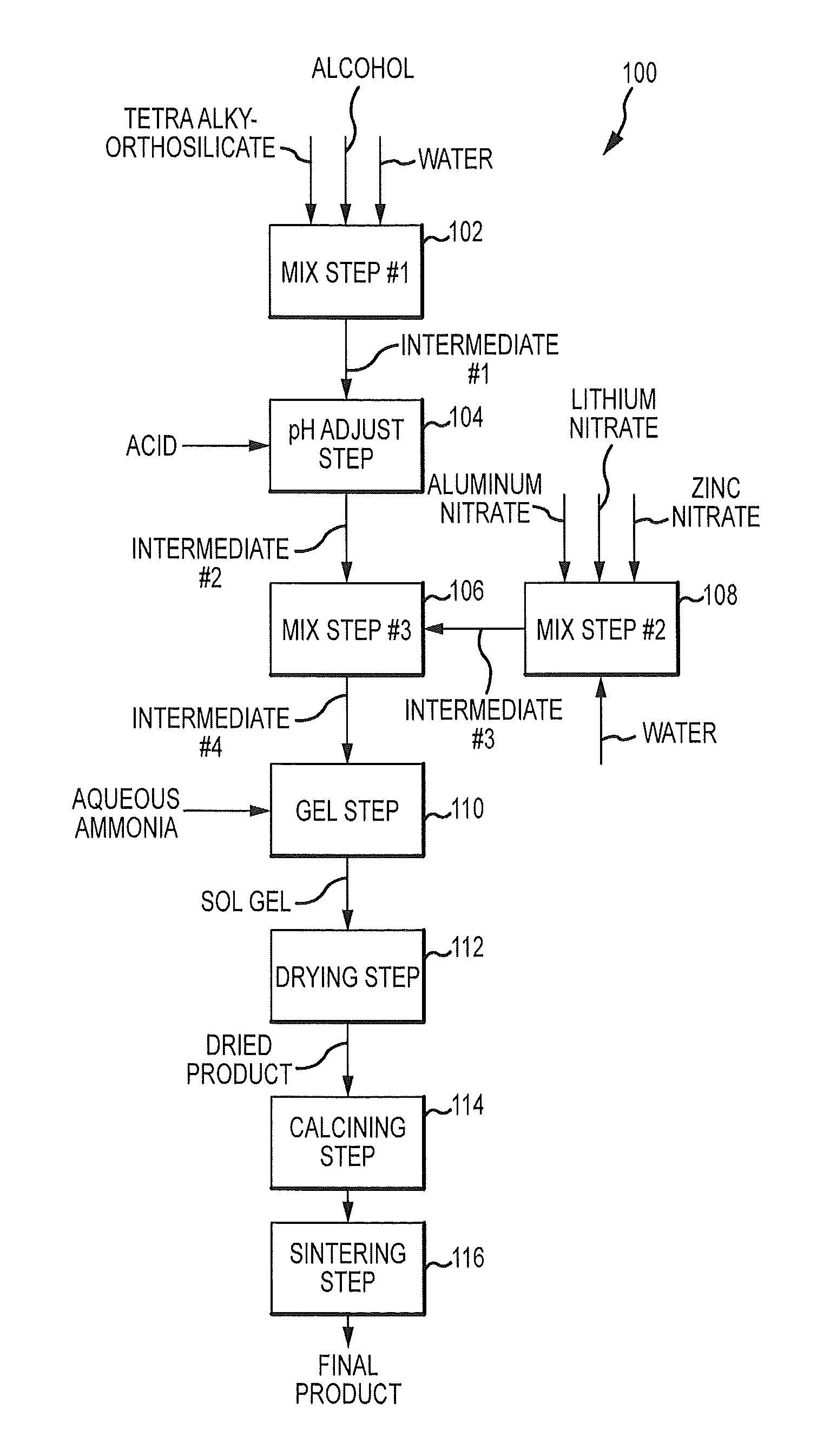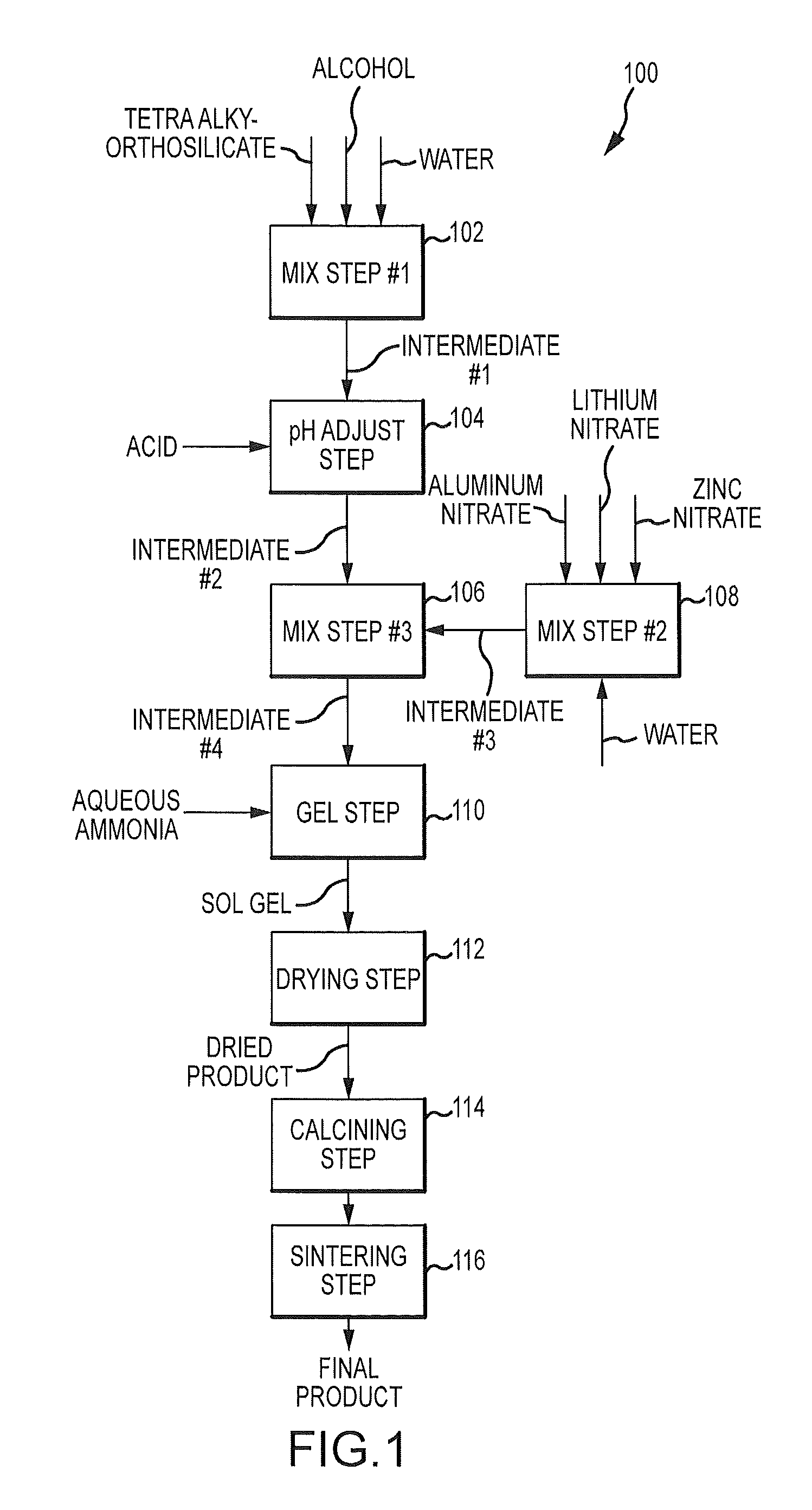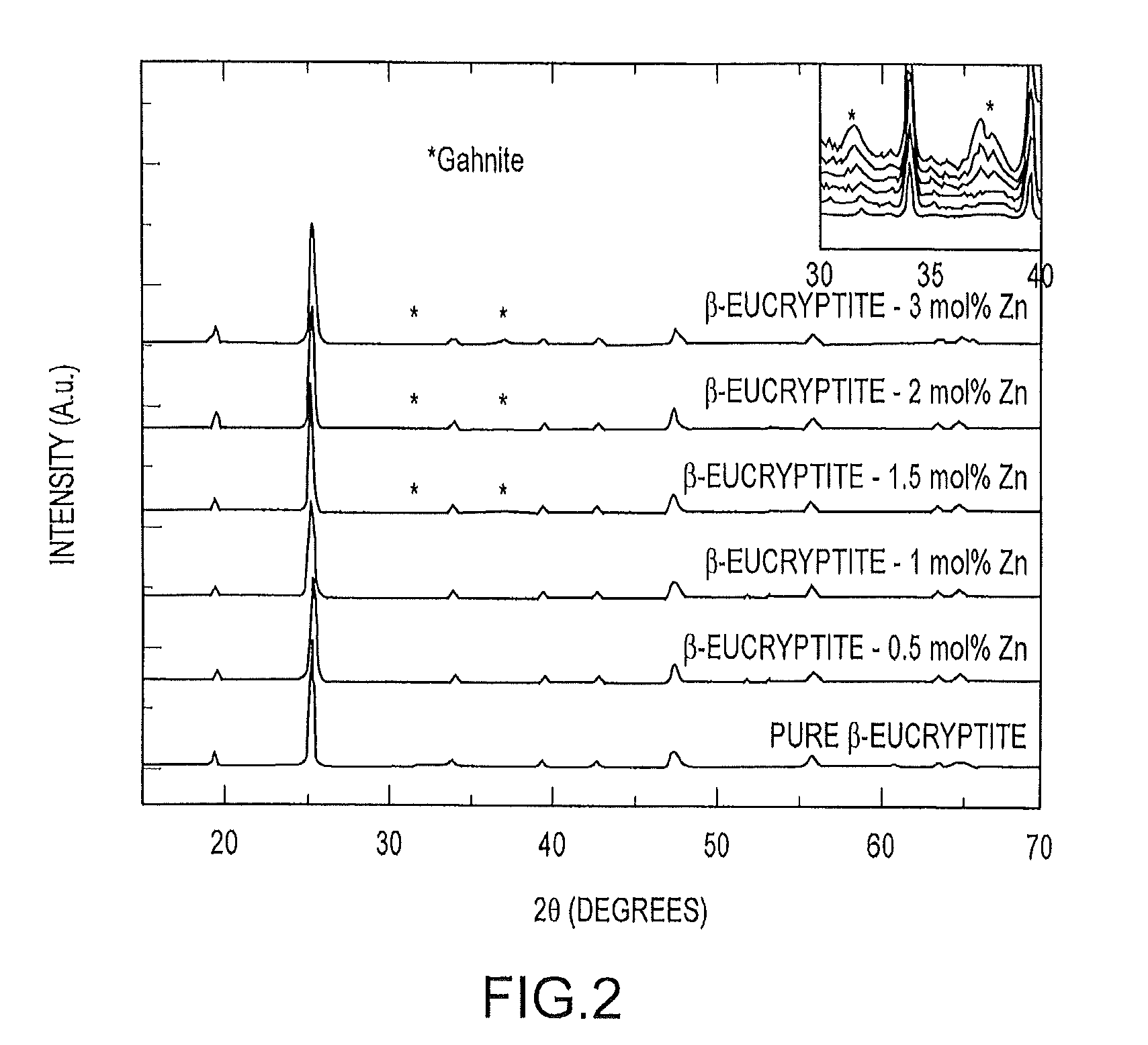Near zero coefficient of thermal expansion of beta-eucryptite without microcracking
a technology of beta-eucryptite and thermal expansion coefficient, which is applied in the field of betaeucryptite materials, can solve the problems of reducing the strength of the material and high cost of fused silica, and achieve the effect of less pron
- Summary
- Abstract
- Description
- Claims
- Application Information
AI Technical Summary
Benefits of technology
Problems solved by technology
Method used
Image
Examples
example 1
[0067]In the present invention, a measured volume of tetraethylorthosilicate (TEOS available from Sigma Aldrich, St. Louis, Mo. 63103 USA) was first added to an equal volume of ethanol (about 95%) and half the original volume of distilled water, to achieve an R-factor (water moles / TEOS moles) of between about 5 to about 7. In some embodiments, the R-factor was about 7. Other suitable solvents include methanol, tetramethyl orthosilicate (TMOS). A person skilled in the art would understand that the moles of water in a suitable solvent would be taken into account to achieve an appropriate R-factor. A few drops of a suitable acid, such as 1M HNO3 were added to adjust the pH of the solution to between about 0.5-4. Though any suitable acid may be used, nitric acid is preferred because the present invention utilizes a nitrate precursor. The addition of the acid also helps to obtain a clear solution after a few minutes of stirring the solution at room temperature. Furthermore, the more acid...
PUM
| Property | Measurement | Unit |
|---|---|---|
| temperature | aaaaa | aaaaa |
| temperature | aaaaa | aaaaa |
| particle size | aaaaa | aaaaa |
Abstract
Description
Claims
Application Information
 Login to View More
Login to View More - R&D
- Intellectual Property
- Life Sciences
- Materials
- Tech Scout
- Unparalleled Data Quality
- Higher Quality Content
- 60% Fewer Hallucinations
Browse by: Latest US Patents, China's latest patents, Technical Efficacy Thesaurus, Application Domain, Technology Topic, Popular Technical Reports.
© 2025 PatSnap. All rights reserved.Legal|Privacy policy|Modern Slavery Act Transparency Statement|Sitemap|About US| Contact US: help@patsnap.com



